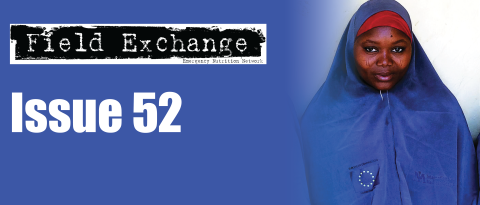En-net update
 By Tamsin Walters, en-net moderator
By Tamsin Walters, en-net moderator
Over the past four months (1st Feb to 19th May, 2016), 49 questions have been posted on en-net, generating 158 responses. Fifty-three vacancy announcements have been posted, which have accumulated over 13,000 views; and six upcoming trainings. Fifteen questions and notices have been posted on the in Scaling Up Nutrition (SUN) en-net, with 35 responses. Discussions have included examination of what makes a nutrition champion; how to galvanise political support for nutrition in SUN countries; and exploration of funding mechanisms for SUN Civil Society Alliances.
A discussion in the Urban Programming area of en-net focused on progress in developing a nutrition survey methodology for urban areas. While a variety of efforts are ongoing, there is as yet no approved standard approach. The World Food Programme (WFP) has been researching urban sampling methodology as part of the joint Global Food Security Cluster and WFP/VAM led project, Adapting to an Urban World. Examples of approaches include the use of remote sensing and satellite imagery to develop sampling frames in Mogadishu (UC Davies); WHO using Google earth images to develop a sampling frame in Lilongwe (WHO) ; and the Jordan Emergency Services and Social Resilience project (JESSRP), which used population density mapping to identify dense populations and then selecting areas (GPS points) at random to allow for random sampling (REACH).
The use of up to date satellite imagery can allow for identification of recent informal settlements. If satellite imagery or other mapping techniques can be used to identify more vulnerable areas of a city (areas of focus), it may be possible to send enumeration teams to the areas to conduct a household count within all target neighbourhoods prior to a survey.
UNHCR has recently developed an addendum to its Standardised Expanded Nutrition Survey (SENS) methodology for out-of-camp settings to address the particular problem of measuring malnutrition among refugee populations in such contexts, including urban situations. The addendum proposes a variety of different methodologies depending on the context.
In response to questions about calculating household food consumption score (FCS) and its relationship with nutritional status of young children, WFP reported a recent update to its FCS guidance, dated November 2015. This includes eight standard food groups, plus 'condiments' which are not included in the calculation and is available here
In addition, WFP has developed the FCS-N to analyse nutrient adequacy of food groups consumed at household level, which requires adding seven sub-groups to the standard FCS. Experience with its use so far has yielded very interesting results. The guidance can be found here or here
Finally, en-net collaborated with the Sustainable Sanitation Alliance (SuSanA) forum in April to encourage the nutrition community to take part in a technical discussion on Water, Sanitation and Hygiene (WASH) and nutrition. The specific issues under discussion were:
- How are water, sanitation, hygiene issues addressed in nutrition interventions (WASH in Nutrition approach) at both household and community levels?
- Where do you see advantages and where disadvantages in a one-way integration and a two-way integration of WASH and nutrition?
- Approaching WASH and Nutrition in the development context and in the emergency context - where do you see the major differences?
- How does advocating for nutrition differ from advocating for WASH & Nutrition integration?
A link to the discussions is available here. A summary of the consultation will shortly be shared on en-net.
To join any discussion on en-net, share your experience or post a question,visit our website. To go directly to the SUN location click here: SUN en-net
Contributions from AS, Charulatha Banerjee, Kathryn Ogden, Jona Toetzke and Caroline Wilkinson.


